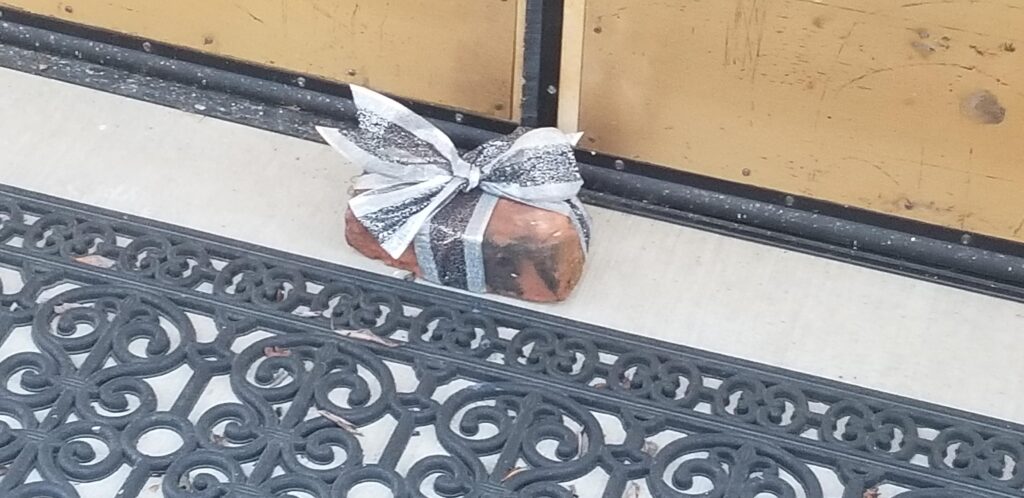This is probably worse than the plastic problem tbh
imagine what happens if the soil is inundated with plastic eating bacteria
plastic house siding? eaten
drip irrigation systems? eatenthe only thing worse than a world full of plastic, is a world with no plastic after having been built solely on plastic
Wood is far more ubiquitous than plastic materials in construction, for framing buildings plastic is virtually nonexistent, if they can eat petroleum products it could affect the water proofing of a building and some types of roofing.
Polymers are usually added to composite wood products and exterior building panels too, but I guess the question is whether this stuff will decay if it's kept dry. Wood usually breaks down faster when it's wet or infested with bugs.
Wouldn't this be the opposite? We might not die in a microplastic apocalypse, but a bug might eat a hole in my water bottle.
I don't think this will be rapid enough where one day, out of the blue, a swarm of locust comes and eats all your siding. It will be a slow degradation that we have to respond by moving back to metal piping or some other material. I know someone that worked in PEX piping manufacturing, and they had to deal with Box Elder bugs boring holes in PEX plumbing for over a decade. We will have to adapt to moving back to glass and metal, along with other materials, but I would think, if this turns into bugs and bacteria breaking down plastics on time scales less than 1000 years, it will be a long term good, with some short term disruptions.
Why'd we move away from metal pipes anyway? Is it just more expensive?
More expensive to make, transport and install (heavier), and metal degrades far more quickly than plastic. Cast Iron is used for sewage and rainwater because it's non stick but is actually fairly fragile compared to PVC or whatever the fuck they use now
Huh I would've figured metal would last a while, but I guess it rusts easily. Suprised they haven't engineered ways around that.
If your water has a high pH it will corrode your copper piping. My water pipes were so thin you could chew them.
I mean you could use stainless steel or use some kind of coated metal so there are technically non plastic solutions it comes down to cost
And that metal? It was lead.
spoiler
[I'm being totally glib , don't actually know if that's the case for sure, just FYI]
Yeah that goes without saying, but there has to be other safe metals they could use right? Or why not engineer a new lighter one?
More expensive for stainless steel and more corrosion for copper/iron pipe. Also more brain poison for lead pipes.
I'd take that tradeoff in a heartbeat. We can find solutions for drip irrigation and other flexible piping.
Not having to worry about landfills or microplastics or other contamination would be a godsend, even if it meant we had to go back to using wood and metal and clay and cloth in numerous circumstances.
Not having to worry about landfills or microplastics or other contamination would be a godsend
in every case I have looked at so far where bugs eat plastic, they just siphon the nutrients out of the plastic, and then shit out the toxins.
so you would just have bug poop filled with microplastic toxins everywhere
they just siphon the nutrients out of the plastic, and then shit out the toxins.
:jesse-wtf:
Plastics don't really have nutrients. PVC has chlorine in it but so does sea salt. The polymer breaks down into simple components, and the chemical energy would come from the single carbon bonds of the skeleton.
:shrug-outta-hecks: i just remember getting excited about hearing about mealworms being able to eat styrofoam and someone said to me "Nah, it's not gonna save the environment because they shit out a lot of bad stuff that still isn't broken down". Now obviously they worded it smarter than that, but I'm a dumbass and can't remember.
Breaking down bigger pieces into smaller pieces. It really only stops being a microplastic when the last dimer is converted to a monomer, and those sizes of 0.01-1.0 micrometers can interfere with a lot of cellular functions.
In other words, if you break it down, you want to break it down all the way.
Oh damn, i never thought of that lmao. Also cant forget, plastic is made of carbon, so, more emissions baby
All life is made of carbon. Plastic is made from hydrocarbons sourced from the remains of ancient microbial life. Generally there are fewer emissions associated with e.g. a tree decomposing than that same tree being burnt, since the organic (meaning carbon-based in this case) molecules are either used by the decomposers, or broken down into their constituent parts, eventually becoming soil. I'm not sure if there is bacterial respiration involved here that would mean significant emissions.
I’m not sure if there is bacterial respiration involved here that would mean significant emissions.
Sometimes, e.g. fermentation
There's not an inordinate amount of plastic in homes that have even been built in the last decade imo. Plastic piping has become more common in areas where it doesn't get below freezing but it's a fucking stupid idea to begin with, aside from window frames and sinks/bath fixtures I can't think of much that are made primarily with plastics.
PMC Karens pretending they care about the environment: eat the bugs!
bugs: gorge themselves on microplastics
I believe it is permissible for locusts to taste like shrimp, yes. How would you convince them to stop?
Oh shit I don't want plastic in my eco-friendly insect burgers 😫
Imagine squishing a bug and it just pops pack into shape because it' exoskeleton is reinforced with plastic and then it comes for revenge
Oh god they'll be like the aliens in Peter watts blindsighted, they have plastic skin
Super advanced indestructible cockroaches will conquer the galaxy. The true great filter is finding species that can survive a nuclear winter while eating plastic.
Gonna collect as many of these bacteria as I can, clear out my gut microbiome, and re-inoculate it with these guys so I never have to worry about microplastics again
"Tired of plastic accumulating in your body? This one pill has the cure you need!"
Grifting the health food community for a good cause
Just wait untill ocean bacteria evolve to eat plastic then whoops, the atmosphere is now methane or something like that. That's how the first major mass extinction happened with oxygen producing bacteria
Okay who had "The Atmosphere is now farts" on their human extinction bingo card?
Am I the only one not surprised by this? I read the headline and my gut reaction was "well, duh, theres's so much of it everywhere"
Plastic is not soluable in water and doesn't really break down to most organic acids, so most life just can't really interact with it. I think the main reason micro plastics interfere with our biological processes is because it just jams up our cells, it doesn't really do much else(although I'm not sure about this). There's also nitrogen everywhere, but most animals can't get much out of it unless it's already been bound to something else by bacteria.
This feels like a good thing, but if plastic enters the food chain it's going to find its way in ever-increasing quantities to us, and there's no telling what the fallout of that will be. It's like mercury buildup in fish, not good.
From the article it sounds like these bacteria are breaking down plastics into their component parts, which is good (unless one of the components, or a byproduct, is hazardous).
We need more ceramics research. Idk how bad it is for the environment but ceramic stuff is cool and should be used in more places. The essential PH1 had a ceramic back that was basically impossible to scratch.
i'd be afraid of stains/water damage but that'd be cool if it was pressure treated and sealed.
A few years back Xiaomi made its first Mi Mix phone completely out of ceramic. Incredibly difficult to scratch, but might shatter if you drop it.
Also, such an incredibly slippery mother fucker that it'd slide around on a table by itself.
the ph1 had a matte and glossy version. the matte ceramic was pretty grippy.
















